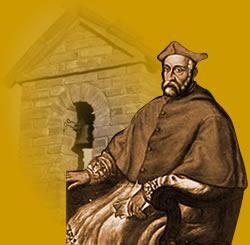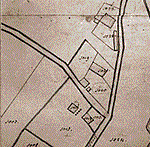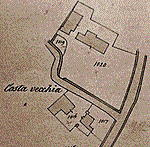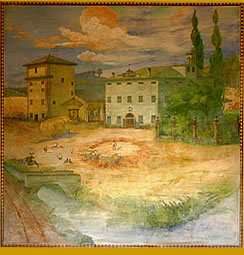Costavecchia yesterday... 
|
|
 |
 |
The documented history of the estate Costavecchia began in 1472. In that year the Fathers of the convent of S. Domenico in Mantova purchased some lands of the actually estate of Costavecchia. In 1538 cardinal Ercole Gonzaga let the Dominicans to erect an oratory in the estate. The oratory was intended to celebrate service, to play bells to gather the people and as a sacred place for the Virgo and S. Anthony.
Still today, the oratory’s bells play for inviting you to the court and to find again that contact with nature and to continue the history. |
| |
|
|
The Cardinal Ercole Gonzaga. |
... And today |
|
|
 |
 |
 |
Today Corte Costavecchia is a place of serenity and elegance, whit numerous services on disposition for our guests. For example, matrimonial banquets, a savory and revitalize lunch and a pleasant immersion in nature. Corte Costavecchia is an ancient rice court with an ample farmyard surrounded by ditches where barges full of rice docked.In the main building it is possible to admire a seventeenth century frescoes and an Italian park of over 12000 square meters. On the “Colombara “ tower is visible an ancient seventeenth clock that still work today.
We produce fruit, vegetables and grain through biological management only. We cook risotto, home-made pasta, mixed grill, cooked spits on the fireplace, cakes and biscuits. |
|
|
| |
|
Corte Costavecchia
in the frescoes of the building. |
| |
|
|
| |
|
|
 |
|
 |
| |
Historical signs
"Anciently, the owner of the actually estate of Costavecchia were the Fathers of the convent of S. Domenico in Mantova. Probably the lands has always been granted leasing. The last tenant, from 1772 to 1773, was the count Francesco Mezzanelli of Verona. In 1789 the convent of the city was suppressed by the Austrians, and again in 1801 by the French of Napoleon who confiscated the estate of Corte Costavecchia and was listed under the name of the “Department of the Mincio”. In the beginning of the following year (1802) the department of the Mincio alienated some small parts of the land and in 1807 as payment for their duties the workers of the land inherited this. Two of the inheritants were the cousins Angelo and Domenico Sissa of Revere and Ubaldo Bonanomi of Luzzara. The remaining estate was inherited by Bonanomi of Luzzara who revenged the Costavecchia. Following the distribution the land was reduced to two hundred “biolche” and was donated to the priest Don Giuseppe Raimondi of Verona. Within a decade, the priest used his wealth and magnified the estate to six hundred “biolche”. This improved the irrigation system of the surrounding land and he purchased the rights to the surrounding waters and other existing estates. The priest was ambitious in his development and hoped to transform the land so that it would become profitable in the production of wheat, maize, lawn, rice and various measures, like the neighbouring lands of Costa Nuova. The priest was successfull and so began what would later became the actually Costavecchia. In 1817 the priest was declared bankrupt by the “Court of Commerce of Mantova” who took the land. It was then purchased by Francesco Moro and then by Francesco Vicentini whose wife had purchased the estate in 1822 by auction, they developed the land which became 539 “biolche” by 1833. In this year the land was sold to Carlo Visconti who in 1813 became duke of Modrone by Napoleon. He was last in his family and died in 1836. Although a far cousin was discovered who succeeded him and became the duke of Modrone and inherited all the lands along with Carlo Visconti’s widow. To this family the ownership remained until the year 1889 when it was old to Bartolomeo Pellegrini along with the surrounding land. He had been residing within the estate and working the lands from the year 1846. Following the death of Bartolomeo Pellegrini the estate was inherited by Giacomo Castagnari in 1892 who sold it to brothers Alessandro, Luigi and Sordello Pavesi in 1918, who had been tenants of the estate from 1891. In 1919 Sordello Pavesi was granted single ownership of the estate and in 1948 it was inherited by his son Andrea who died in 1983. After further passages of ownership, the estate passed to the Zanetti family who in 1999 sold the court only (not the surrounding lands) to the Gazzani family who reside there today."
The passage is drawn from: GIULIO GIRONDI, Architettura e acqua. lungo il corso del Mincio da Bell'Acqua a Garolda. Mantova, 2005, Ed. Sometti
|
|
| |
|
| |
|
|
| |
 |
 |
|
| |
|
|
| |
In the photos: Corte Costa Vecchia in the cadastral maps of the territory of San Giorgio in Mantova: to the left particular of the sheets 7 and 12 of the Teresiano Inventory, to the right particular of the sheet 1 of the Lombardo Veneto Inventory. |
|
 |
|
 |
|
| |
|
|
|





